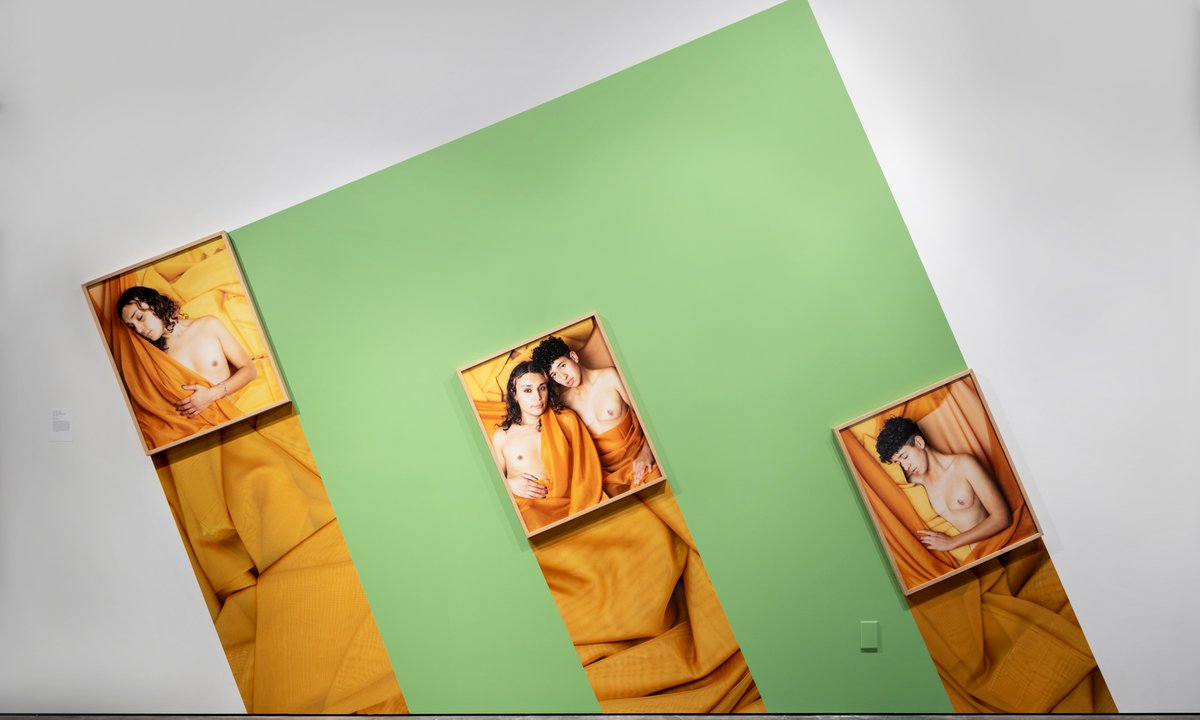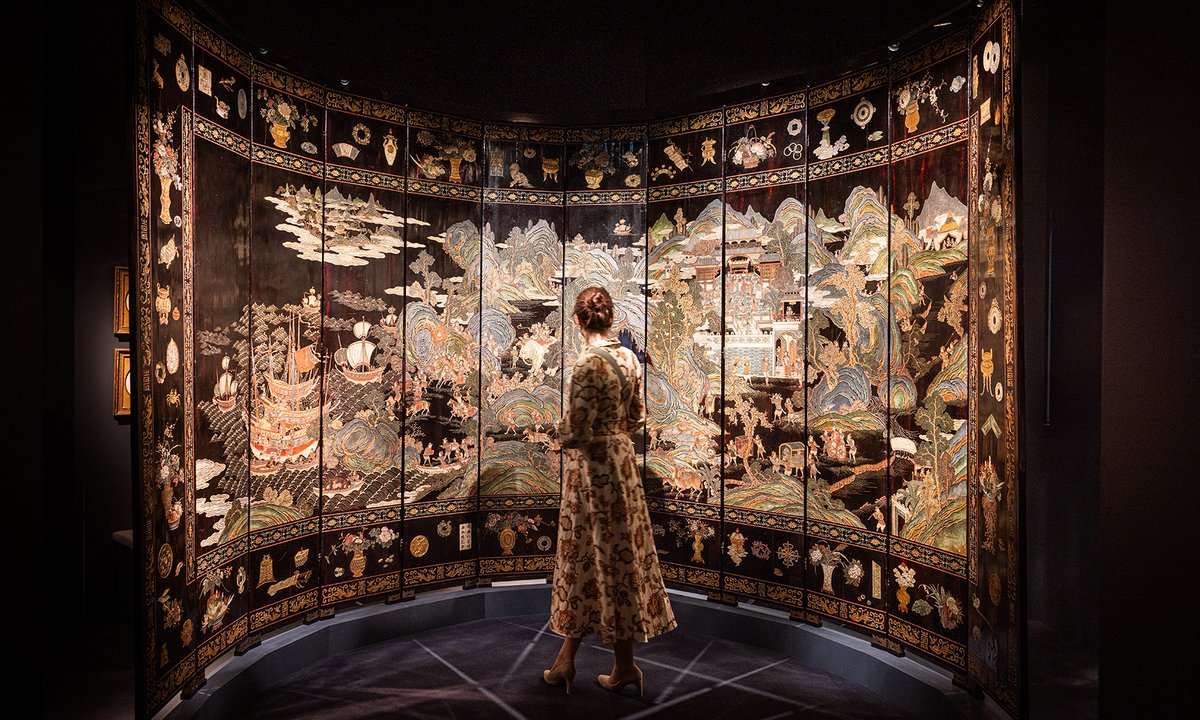
A pilot programme that provides San Francisco artists with a monthly stipend has entered its second round, with 60 eligible artists receiving $1,000 a month over 18 months, no strings attached. Organised by the nonprofit Yerba Buena Center for the Arts (YBCA) in partnership with six local community groups, the $1.3m initiative aims to advocate for guaranteed income (GI) as a sustainable way to support artists, particularly those from historically underserved communities, and tackle systemic inequities in the arts.
“Something we’ve been exploring in the last two years has been what it means to provide an economic floor and economic security for artists in our community,” Stephanie Imah, YBCA’s director of artist investment, says. “GI was this eye-opening model because you don’t have to practice your art to be deserving of this income. You literally have to be human, living in an unjust economic ecosystem.”
One of the nation’s first GI pilots for artists, the programme was originally announced in March 2021 in partnership with the Mayor’s Office to support 130 artists who were disproportionately impacted by the Covid-19 pandemic. Its second round, which received funding from Jack Dorsey’s StartSmall Foundation and billionaire Mackenzie Scott, also targets those facing financial hardship and from communities that have been historically underfunded, including BIPOC (Black, Indigenous and People of Colour), LGBTQIA+, disabled and immigrant communities. The launch comes amid growing interest in the potential of unconditional cash payments to provide artists with financial stability. Similar programmes have since been established in St. Paul, Minnesota and New York.
The movement toward guaranteed income in the cultural sector is fueled in part by Covid-19, which exacerbated existing inequities and brought into sharp relief the lack of adequate social safety net programmes for artists.
A survey by Artist Relief on the impact of the pandemic on US art workers found that by April 2020, 62% of artists had become fully unemployed and 95% experienced income loss. Americans for the Arts also found that as of July 2021, BIPOC artists had higher rates of unemployment than white artists in 2020 (69% versus 60%) and lost a larger percentage of their creative income (61% versus 56%). In California, the fine and performing arts sector was especially hard hit, with its workforce shrinking by nearly 20% amid pandemic shutdowns, according to this year’s Otis College Report on the Creative Economy.
Among those impacted in the Bay Area was the photographer Marcel Pardo Ariza, who last year received a phone call telling them they had been selected for San Francisco’s guaranteed-income program. “It felt like a blessing, because I had just had top surgery, I had just lost my job through the pandemic,” Pardo Ariza says. “It’s helped me to be able to do more teaching but also create more space to focus on my practice, which is mostly about leveraging the leadership of brown and Black trans organisers.”
In addition to covering their health insurance, Pardo Ariza has used the cash transfers to buy art supplies and pay people with whom they work. “I feel like we are realising that there’s a lot of grants and financial support for artists that are conditional, and it’s really important that we’re moving to this kind of unrestricted distribution, where you’re trusting the artists and how they’re using the money to further advance their practice,” Pardo Ariza says. “It’s a system that’s supposed to benefit one person, but I think it also benefits those around you.”
The photographer was chosen by Compton’s Transgender Cultural District, a member of a new coalition that YBCA convened to solicit greater community input for its second stipend distribution. The Creative Communities Coalition for Guaranteed Income also includes the local arts and cultural organisations Black Freighter Press, Chinese Culture Center of San Francisco, Dance Mission Theater, Galeria de la Raza and the San Francisco Bay Area Theater Company.
Jenny Leung, the executive director of the Chinese Culture Center, says the nonprofit joined the coalition to help it reach more underserved artists, specifically immigrants who may face language or technology barriers. “There is not an infrastructure for those artists to be successful, even if they’re great at their craft,” Leung says. “They’re not within the kind of understanding of the traditional mainstream funding world, and so it’s very difficult to reach those artists if the system is not built intentionally. When we were invited, we saw the opportunity to advocate for how the outreach can be more equitable.”
One fundamental change to the programme’s second iteration was rethinking the selection process to be more inclusive. Last year, YBCA invited low-income artists to apply and received more than 2,500 applicants, which it narrowed down with a lottery system. That process led to “a tension around prioritising speed over equity”, Imah says. “A lot of what we learned was that an application can be viewed as a barrier. How do we connect with those folks again?”
This year, YBCA worked with community leaders from the start and asked each coalition member to select ten artists through a process of its own design. Representatives of the Chinese Culture Center, for instance, visited 15 artists in their homes and spoke with them about their art and their need for funding before narrowing the pool. “One of the criteria we wanted to include was making sure that the artists were deeply embedded within the community,” Leung says. “We didn’t put restrictions on it because it’s guaranteed income, but we saw that a lot of artists who eventually got the funding were able to supplement their work and craft and be able to invest more into the community.” Recipients include the filmmaker Kar Yin Tham, who has been able to fund a documentary she is producing on housing inequality in San Francisco, and the Baht Wor Charity Foundation, a 6o-year-old Cantonese opera group that has used the money to pay rent.
Combating displacement is one of the programme’s main goals, Imah says, especially in a city so transformed and threatened by gentrification. “We want to be able to hear from all 60 artists that they were able to stay, exist and also maybe open a new gallery, do something new with their art or contribute in a different way where they didn’t [previously] see opportunity.” She notes that the coalition is at a stage where it is figuring out what comes next, especially as scaling the programme is a challenge. “What we’re doing is securing funding as best as we can with private and public donors,” she says, adding that “it’s important that this moves into a state or federal level”.
Pardo Ariza, who is from Colombia, says they hope the initiative stays, as it demonstrates that San Francisco is a city that values and wants to invest in cultural workers. “We see such an exodus of artists and cultural workers in the Bay Area with increases in housing and just living expenses,” they say. “I think a program like this gives you a sense of not really thinking just in the day to day, but starting to think a little bit more long term. For me, the Bay Area is my artistic home. And I want to live here, I want to stay.”







